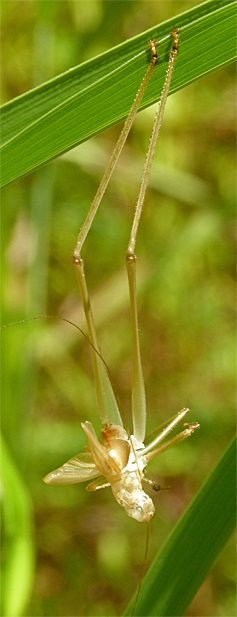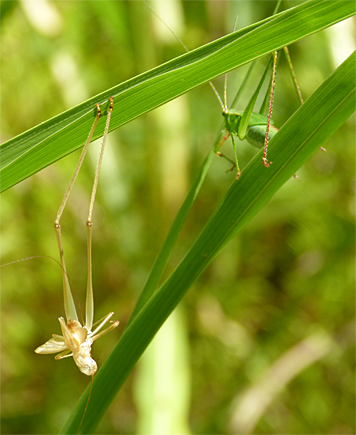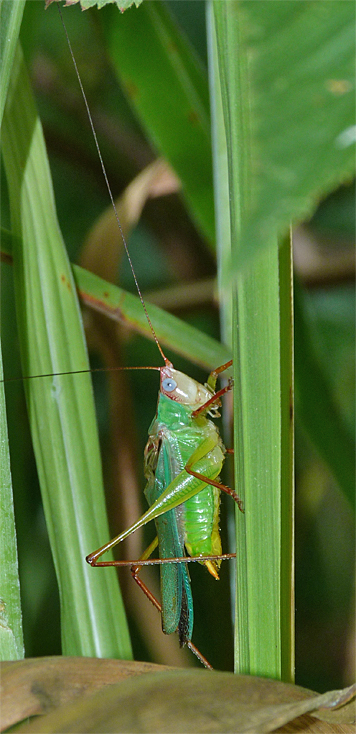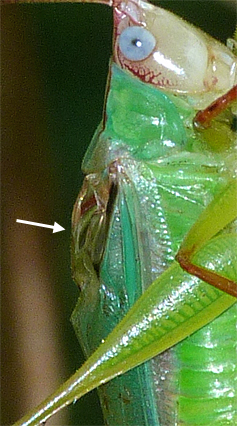
I look forward to my weekly walks with the Outdoor Summer Campers. We always find something interestng.
Certainly, as the season progresses new plants come into flower, seed, or fruit, birds move forward in their nesting or migrations, and insects continue their emergence and growth. This past Wednesday we found evidence of the latter part of that statement in Explore the Wild.
The first question I put to the campers upon seeing the object on the right is, “What do you think this is?”
At least one camper answered the question with a correct answer saying that it was the skin from a molting insect. It is indeed an exuvia, or cast off skin, of a recently molted meadow katydid.
Good answer!
When katydids hatch they look very much like miniature adult katydids and are known as nymphs. They do not have a complete metamorphosis and must molt at least four times to reach adulthood.

While I can’t be certain, the katydid in the photos (above) looks to be a Handsome Meadow Katydid (Orchelimum pulchellum) nymph. It’s definately a meadow katydid of some sort, and I’ve seen many handsome katydids in the vicinity, so that’s a reasonable assumption. The males have been stridulating (singing) for the past several weeks.
The katydid below is without a doubt a Handsome Meadow Katydid. It’s a male that is singing out to others that he’s ready to mate.

When these katydids stridulate, or sing, they rub a “scraper” on one forewing against a “file” area on the other forewing to create the sound that we hear coming from the grass.

Meadow katydids are relatives of the familiar True Katydids that are heard at night calling from the trees, “katydid, katydidn’t.” The meadow katydid’s call is much softer and with a different cadence. However, they are more easily located than true katydids since they prefer the tall grasses of fields and meadows. They’re down on our level.
The best place to look for meadow katydids here at the Museum is in the tall grass on the north side of the Wetlands in Explore the Wild and on the left side of the path after you leave the Lemur House headed for Catch the Wind. All of the photos you see here were taken in those two locations.
Stop and have look and listen.
Good luck!